Sponsored by

Ronald Reagan–the Great Communicator– famously spoke of America in metaphor: a melting pot. A shining city on a hill. The promised land.

I picture America as a thermostat.
A thermostat is constantly fluctuating. You give it a set point, and when the temperature goes above it, it will cool your house down. When the temperature dips too low, it will start heating up. Back and forth, back and forth.
Politics works the same way, except the temperature is ideology and the thermostat is the American electorate, constantly shifting from one side to the other to regulate the country from going too far in either direction.
Now, to be clear: I didn’t come up with this metaphor. It dates back to 1995, when the political scientist Christopher Wlezien wrote his seminal paper, “The Public as Thermostat.” Wlezien showed that when the government spends more money, public opinion starts shifting in a conservative direction. Then, the government starts spending too little, and the public clamors for higher spending. You can guess what happens next.
As election results rolled in on Tuesday night, I was trying to pay attention to electoral maps of Wisconsin and Florida. But all I could see was Wlezien’s thermostat superimposed over the screen. The outcome tracked with his predictions perfectly:
In Wisconsin, a state President Trump won narrowly in November, Democratic-backed Susan Crawford won a state Supreme Court seat by 10 percentage points.
In Florida’s 1st district, which Trump won by 37 points, Republican Jimmy Patronis scored only a 14-point victory to win the House seat vacated by Matt Gaetz.
In Florida’s 6th district, which Trump won by 30 points, Republican Randy Fine won by half as much (also by 14 points) in the special election to succeed Michael Waltz (of Signalgate fame).
Not even six months ago, here’s what a map of the 2024 Wisconsin presidential results looked like compared to the 2020 election:
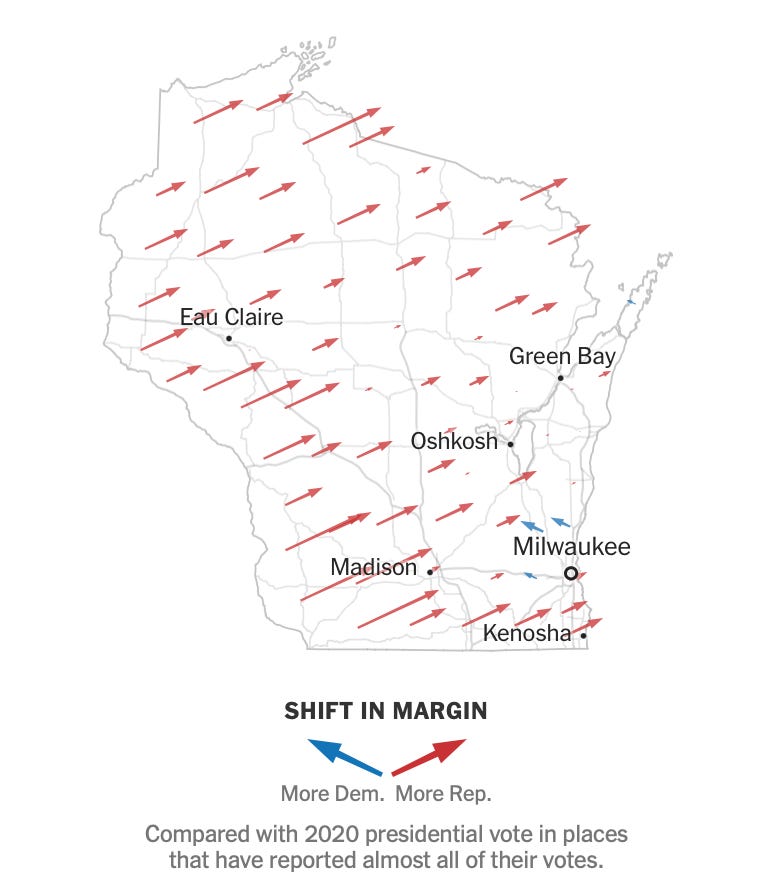
And here’s what Tuesday night’s state Supreme Court results looked like compared to the November presidential race:
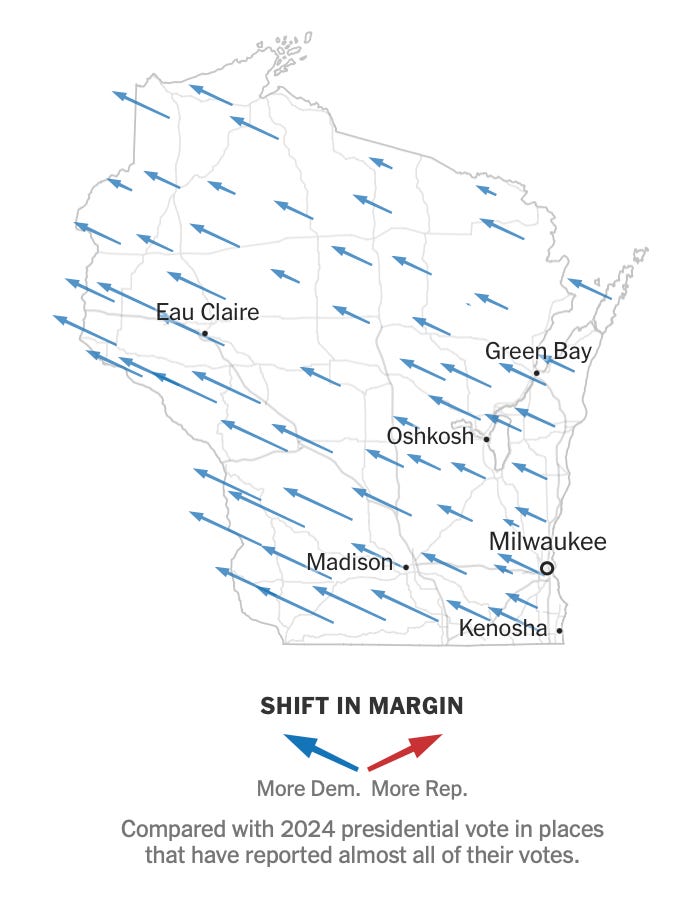
A swing like this comes down to a complicated mix of factors, including the reality that the Democratic voter base is composed of more highly educated and high income voters, who are more likely to participate in off-year and special elections.
But it’s also proof of the thermostat at work.
Jim Stimson, a professor at the University of North Carolina, has been researching thermostatic public opinion for decades. (His work is repeatedly cited in Wlezien’s paper.) He’s developed an index of polling questions that he averages together to calculate the “Policy Mood” of the country each year.
If you look at his graph, a familiar pattern emerges: when a Republican president takes office, the U.S. moves in a liberal direction. When a Democratic president takes office, the country grows more conservative. Put in this light, America seems more like a moody teenager than a thermostat.
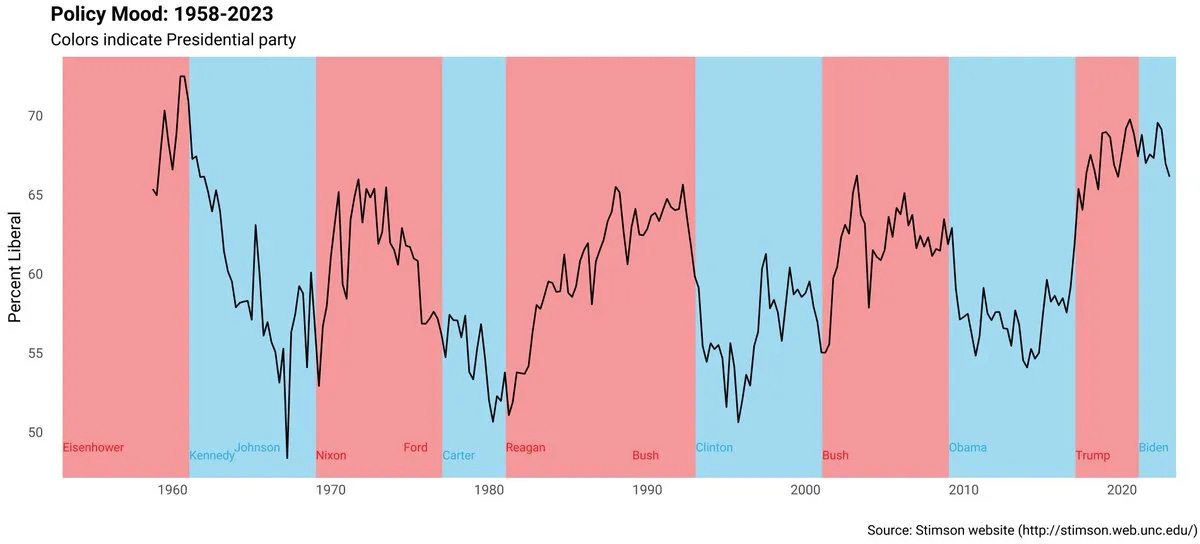
I interviewed Stimson back in January, in the opening days of Trump’s second term, when it seemed like the national mood had made a sharp swerve in the president’s direction. “It always does in the months immediately after an election,” Stimson told me. “And then it fades… We know how [public opinion] moves. It moves cyclically, in contrast to whoever is in power at the moment.”
Stimson predicted that, before long, the mood would start swinging against Trump. “Presidents overreach with great predictability,” he explained. “They make commitments to their primary electorates, which push them to go too far to either side for the electorate, and then the moderate electorate pulls them back.”
The longtime professor appears to be correct. According to the Silver Bulletin average, Trump’s overall approval rating has dropped four points since Inauguration Day, but his disapproval rating has gone up 10 points. Opinions of his handling of the economy are on the slide as well.
From our sponsor:

If you only read news that leans politically in one direction or the other, you might not be getting the whole story.
That’s exactly why Ground News exists.
It’s an app and website that pulls in coverage from across the political spectrum so you can spot bias, check a source’s credibility, and verify if the narrative’s being controlled by billionaire interests.
A quick look through their Blindspot Feed shows that many news outlets that claim to be “neutral” actually lean to the right — and that means stories like this could go underreported. The Preamble readers can get 40% off Ground New’s unlimited Vantage Plan. Click here or visit ground.news/preamble to subscribe.
Trump’s Wednesday announcement of sweeping new tariffs is a classic example of a president reaching beyond what the electorate was expecting, just as Stimson forecasted. According to polling, the same is true of many of the actions taken by Elon Musk and his Department of Government Efficiency.
Then, Musk tried to make himself the face of Tuesday’s Wisconsin Supreme Court race, helping fuel the perception that the contest would be a referendum on him and Trump. Musk descended on Wisconsin last weekend (wearing a cheesehead hat, of course) and poured millions of dollars into the race. The “course of Western civilization” was on the line, he declared.
But judging by the results, it appears that Musk’s presence in the race was a boon for the liberal candidate, not the conservative.
You can also see the thermostatic effect in specific issue areas. 81% of Americans told Gallup in a recent poll that they view foreign trade as an opportunity for economic growth — not a threat to the economy. That’s a 20-point jump since last year, before the occupant of the White House began promoting the opposite message.
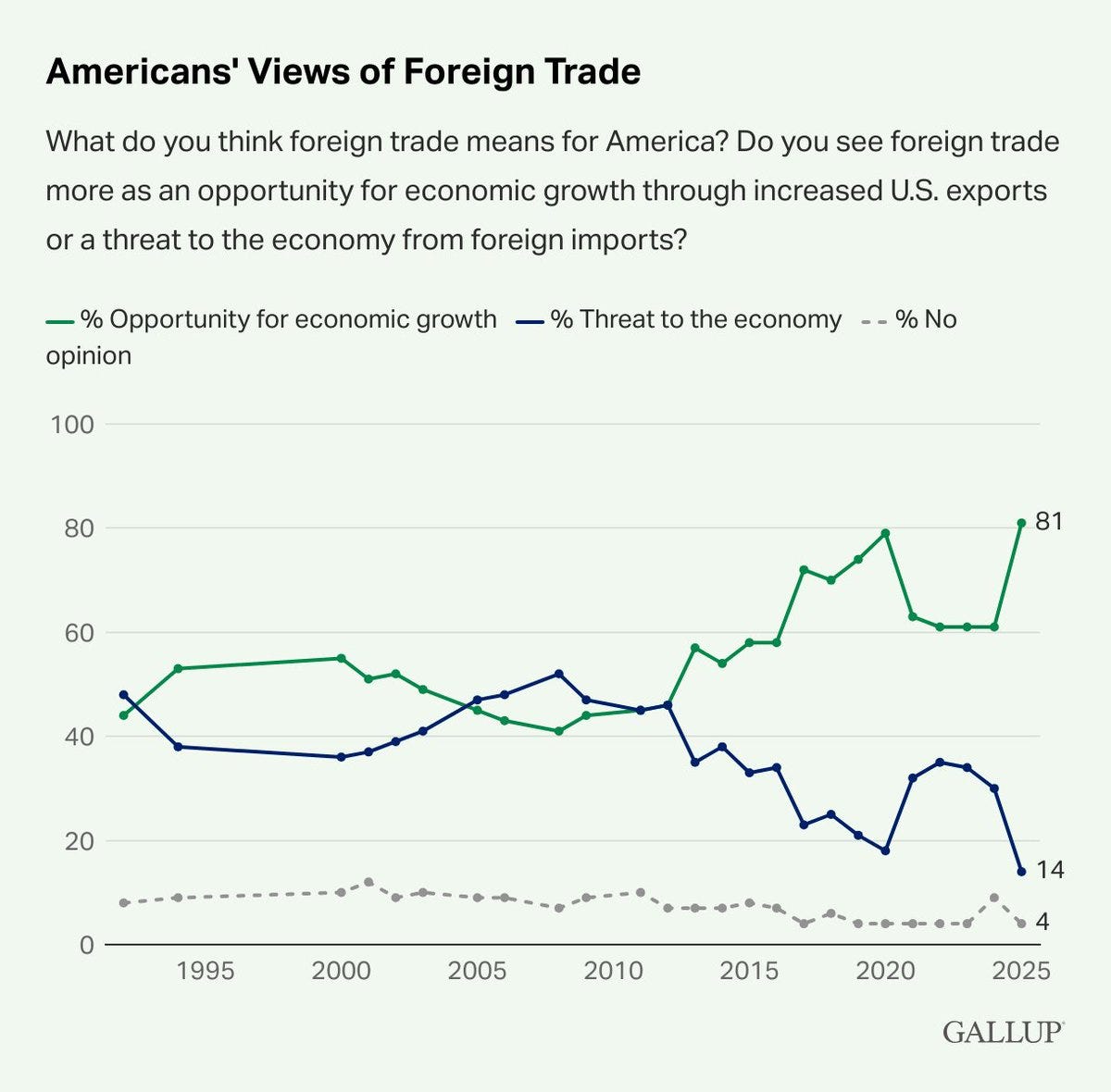
The same thing happened on immigration in Trump’s first term: during 2016 and 2020, the percentage of Americans who believed immigration levels should be increased rose by 13 points, in reaction to Trump’s anti-immigration rhetoric. Then, during the course of Joe Biden’s term in office, the percentage of Americans who wanted fewer immigrants leapt by 34 points, in response to his more pro-immigration policies. In other words: when the president is anti-immigrant, the public becomes more pro-immigrant, and when the president is pro-immigrant, public sentiment reverses.
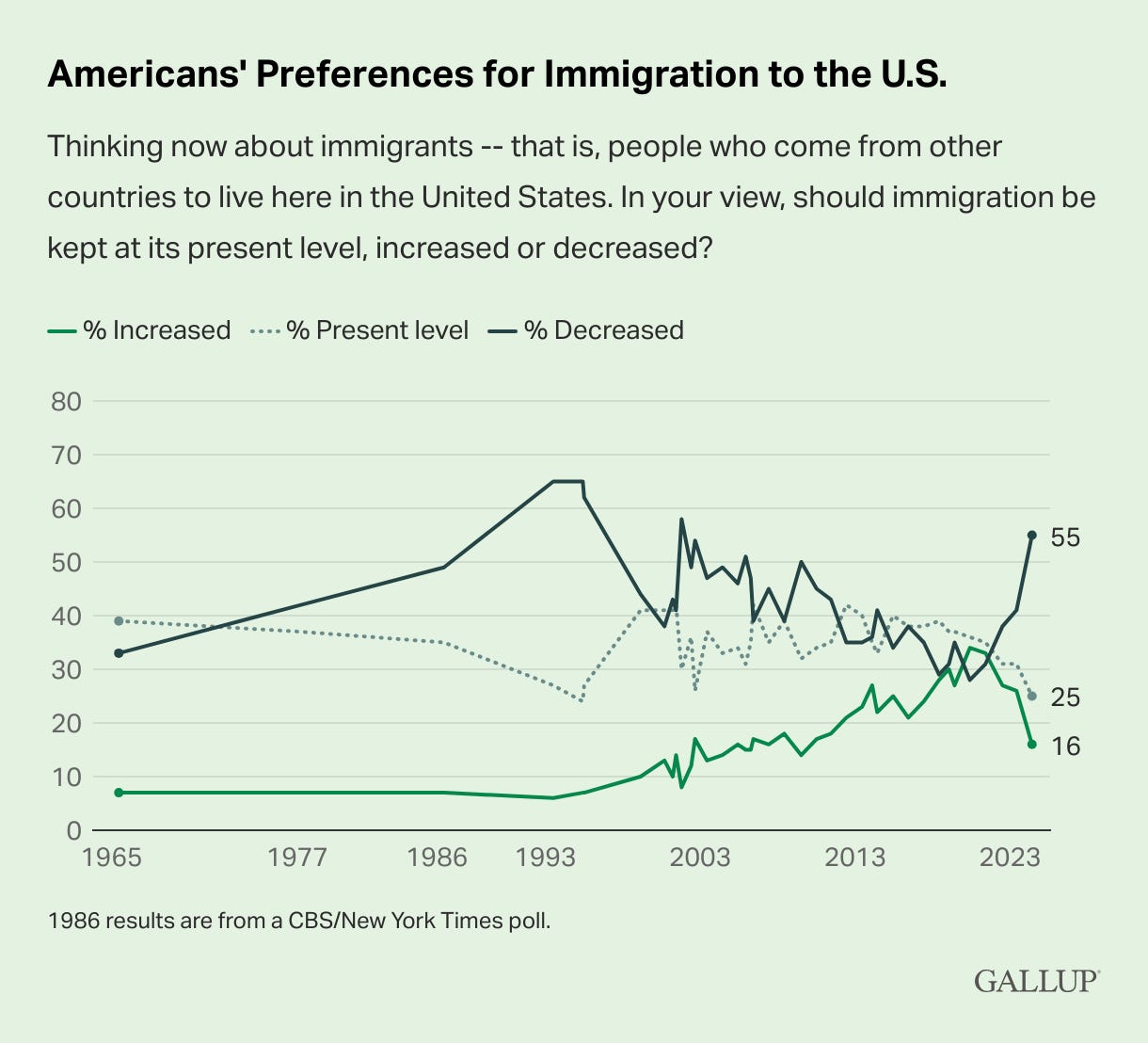
The Princeton political scientist Frances Lee has even found that the more a president discusses an issue, the less support it gets. Presidents are like giant polarization machines: almost any policy they push for, they are nearly guaranteed to make Americans feel more negatively about it.
The biggest test of reactions to Trump’s second term will come in a year and a half, during the 2026 midterms.
In keeping with the model of thermostatic public opinion, the party that controls the presidency usually does poorly in midterm elections, losing an average of 25 House seats since World War II.
Even before Tuesday’s special elections, there were signs that Republicans were worried about the political environment heading into the midterms. Shortly after winning in November, Trump announced plans to nominate New York congresswoman Elise Stefanik to be his Ambassador to the United Nations. But, last week, Trump said that Stefanik would remain in the House, instead of moving to the executive branch.
Stefanik’s seat isn’t particularly competitive — Trump won it by 20 points in November — but Trump said explicitly that he was making the move out of fear that the GOP might lose a special election for her seat. “With a very tight Majority, I don’t want to take a chance on anyone else running for Elise’s seat,” he wrote.
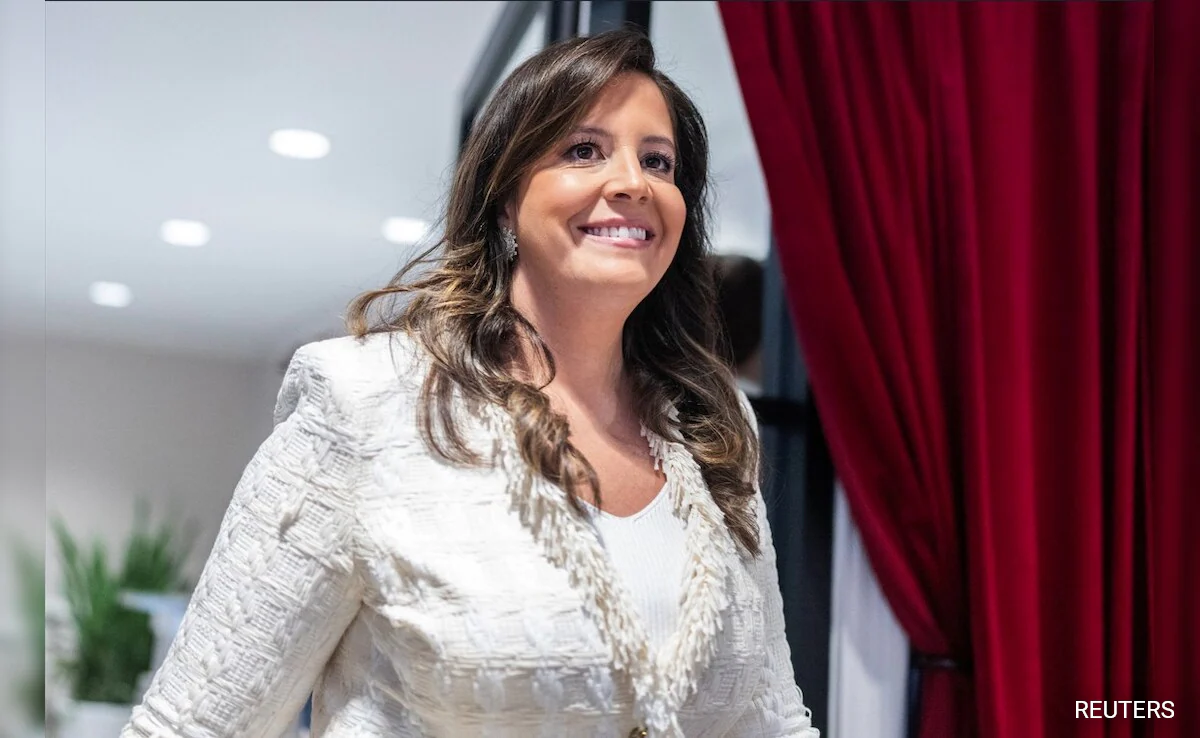
There are 102 House districts that Trump won by as much or less than he did Stefanik’s — which means, if the GOP was worried about her seat, a lot of House Republicans could be in for a rude awakening come November 2026.
Now, after the Trump-backed candidates in Wisconsin and Florida underperformed his margins this week, many Republicans are scrambling. “I’m honestly shocked. I thought we had it in the bag,” a Wisconsin Republican county chair told Politico. “I thought [Musk] was going to be an asset for this race. People love Trump, but maybe they don’t love everybody he supports. Maybe I have blinders on.”

Some GOP lawmakers have even begun to make subtle breaks with the president, seemingly believing that alignment with the White House could become a liability for their political future. Susan Collins (R-ME), the only Republican Senator up for re-election next year in a state Kamala Harris won, blasted Trump’s Canada tariffs in a floor speech Wednesday, before voting to repeal the national emergency declarations that underpins them.
Eight House Republicans penned a letter to Trump on Tuesday asking him to “reconsider” an executive order ending collective bargaining rights for some federal employees. All three of the GOP congressmen in Harris-won districts were on the list.
The main way we test how each party is doing ahead of the midterms are through “generic ballot” questions: in your next Congressional race, do you plan to vote for the Democratic candidate or the Republican candidate? According to the RealClearPolitics average, Democrats boast a slight advantage on that question — which is notable for a party whose favorability rating has plummeted to a record low.
Only 29% of Americans have a favorable opinion of the Democratic Party, according to CNN, but 45% plan to vote for a Democratic candidate in the midterms, according to the “generic ballot” average. That’s thermostatic public opinion doing its thing. Voters may not like Democrats…but, with a Republican in office, they can usually be counted on to dislike Republicans more.
Then, eventually, Democrats will win back power, and the cycle will start itself over again: Suddenly, they’ll be the party overreaching, and Republicans will start to benefit.
If you’re ever wondering which way public opinion is about to swing, you usually don’t need to look at polls or election maps. Just look over at your wall and find the nearest thermostat.